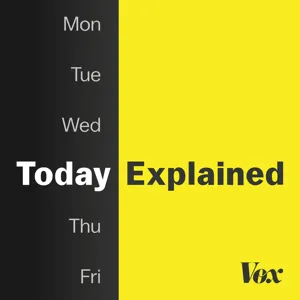Podcast Summary
Power Grid Under Threat: 100+ Reported Attacks in Last Year: The power grid is under attack with over 100 reported incidents in the last year, a 74% increase. Criminals target this lucrative vulnerability, causing power outages and devastating consequences.
The American power grid is facing an increasing number of attacks, both physical and cyber, which has led to significant power outages for customers. These attacks range from those motivated by extremism to simple acts of vandalism or attempts to cause chaos for criminal gain. In the last year alone, there were over 100 reported incidents, a 74% rise from the previous year. The FBI has issued warnings to utilities about these threats and has been investigating recent attacks in California, Florida, and North Carolina, among other places. Despite active investigations, no arrests have been made in some cases. The power grid's vulnerability has become a lucrative target for criminals, and the consequences of successful attacks can be devastating for individuals and communities. It's important for authorities to continue their efforts to secure the power grid and prevent further incidents.
Acts of sabotage against power stations can lead to widespread power outages: Extremist groups planning power grid attacks can cause chaos, destruction, and widespread power outages, potentially leading to cascading failures and significant damage
Acts of sabotage against power stations can lead to widespread power outages and significant consequences for daily life, particularly during extreme weather conditions. Recent incidents in the US have involved individuals with extremist views, including neo Nazis, who planned to attack power grids to cause chaos and destruction. The FBI has been involved in several cases, including one in Maryland where a woman and a neo Nazi leader were charged with plotting to attack multiple substations. These attacks could potentially lead to cascading failures throughout the grid and have the potential to cause significant damage and disruption. It's important to note that not all instances of power station vandalism lead to major outages, and some are motivated by robbery or other criminal activities. However, the potential consequences of successful attacks on the power grid are significant and can have far-reaching impacts.
Power grid attacks leave thousands without power: White supremacy trend in power grid attacks, leaving 45,000 and 14,000 people without power in North Carolina and Washington state respectively, FBI investigating motivations, concern for power grid security increasing
There have been several instances of power grid attacks in the United States, resulting in significant power outages for thousands of people. The attacks in North Carolina and Washington state left 45,000 and 14,000 people without power, respectively. While some attacks have been linked to white supremacy, others have had different motivations. The FBI considers white supremacy a trend due to the large number of plots to take down the grid, some of which have been successful. Authorities are still investigating the motivations behind many of these attacks. The vulnerability of the power grid is a growing concern, and there is ongoing debate about how to best protect these assets. The expectation is not that every substation and transformer will be guarded, but rather that federal and local governments are increasing their awareness and concern about the issue.
Power Grid Security: Balancing Costs and Necessity: Regulators and states grapple with increasing power grid security costs, considering ways to pay for upgrades, while balancing affordability for ratepayers.
The discussion revolves around the ongoing concern for securing the power grid infrastructure against potential threats and the associated costs. Utilities need to make updates to protect their facilities, but there's a question about how much ratepayers should be charged. Regulators and states are considering going farther to enhance security, but the cost remains a significant concern. The North Carolina Utility Commission, for instance, is worried about how to pay for these upgrades. The incidents of power grid vulnerabilities have increased concerns, but we're not yet at the point of deploying armed guards at every substation due to the high cost. The infrastructure act's funds could help defray some of these costs. The question remains whether there's a broad solution to this problem or if we'll continue seeing these incidents sporadically. Regulators have been warning about power grid vulnerabilities since the 1980s, and we've managed to prevent major disasters so far. However, it remains to be seen how far authorities will go in securing the most vulnerable parts of the system.
Power grid vulnerabilities and potential consequences: The power grid, a vital infrastructure, has potential vulnerabilities that could lead to widespread power outages and impact thousands of lives.
Mint Mobile offers an affordable wireless plan for $15 a month with high-speed data, unlimited talk, and text on the nation's largest 5G network. However, the power grid, which often goes unnoticed, is a vulnerable infrastructure with potential consequences that could impact thousands of lives. The power grid is designed with a N-1 level of reliability, meaning it can handle the removal of one component. But targeted attacks on multiple substations, like the one in Baltimore, can exceed the contingency utilities plan for. These substations, which are often located away from populated areas or obscured due to their unsightly appearance, are physically vulnerable and can cause widespread power outages if compromised. While Mint Mobile can help save you money on your wireless bill, it's essential to be aware of the potential vulnerabilities in our power grid infrastructure and the potential consequences of an attack.
Securing Substations: A Significant Challenge: Despite their importance, securing over 80,000 US substations from potential attacks is a significant challenge due to their large number and the increasing ease of access to attack methods online. Utilities must prioritize and invest in upgrading substation security while managing costs.
While substations serve a crucial function in delivering power to customers, their security remains a significant concern due to their large number and the relatively low barrier to entry for potential attackers. With over 80,000 substations in the US, it's not feasible to fully secure all of them, and the basics of physical security are no longer sufficient given their importance. Simple tools, such as bolt cutters and rifles, can cause significant damage, and the methods for attacking substations are increasingly being shared online. Unfortunately, these attacks can cause widespread power outages and disrupt essential services. The challenge for utilities is to prioritize and invest in upgrading the security of their substations while managing the significant costs associated with their maintenance and upgrades.
Homegrown violent extremists threaten critical infrastructure, particularly power grids: Homegrown violent extremists pose a significant threat to critical infrastructure, often causing severe damage and undermining faith in government, but prevention is challenging due to the independent nature of these attacks, and physical security receives less attention and funding compared to cybersecurity.
Homegrown violent extremists (HVEs) pose a significant threat to critical infrastructure, particularly power grids, which serve as a proxy for government competence. These attacks, often perpetrated by lone wolf actors, can have severe consequences, including damage to buildings and communication systems, and can be used to undermine faith in government. The FBI is working to prevent these attacks by monitoring networks of planning and radicalization, but the limitations of investigating independent actors mean that prevention is often a challenge. Despite the potential severity of these threats, physical security receives less attention and funding compared to cybersecurity.
The Need for Improved Physical Security of Power Substations: Traditional security measures for power substations are insufficient. A more tiered approach is needed, including better physical security measures and recognizing the importance of securing critical infrastructure.
While cybersecurity risks have been widely recognized and addressed, physical security for critical infrastructure, particularly power substations, has not received the same level of attention. Traditional security measures like chain link fences and cameras are no longer sufficient, and a more tiered approach is needed to improve security from the bottom up. This may involve investing in better physical security measures for high-risk substations, while also recognizing that complete impenetrability is not achievable. The importance of securing physical infrastructure, especially in the context of increasing threats, cannot be overstated. It's crucial to find a balance between cost and risk reduction, and prioritize investments accordingly.






